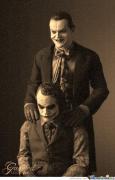I cut my teeth on striker fired M&P's to join the pistol shooting world. I learned and have practiced that if I pull the trigger and no bang I slap the bottom of the mag, rack the slide and roll the pistol to clear the unfired round and get back in the action. There is always a dent in the primer so either the primer was not seated or a light firing pin strike. if I reload this round they will sometimes go bang the second time around.
Now I am shooting CZ DA/SA decockers, which brings me to my question. If I pull the trigger and no bang do I do the Slap rack and roll or do I pull the trigger again to see if it will go bang, if not then do the slap rack and roll.
Which way do you handle DA/SA Fail to Fire? If it goes bang the second time that has to be faster, if it don't go bang the second time and then I do the slap rack and roll that takes more time.\
Thanks looking forward to the wisdom of this site and the people who are here!



 Reply With Quote
Reply With Quote


